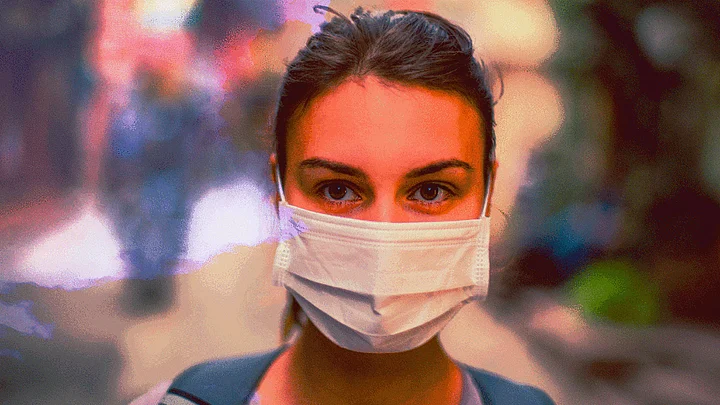The air quality in the national capital New Delhi dropped to 'poor' on Wednesday, 5 October.
According to the Central Pollution Control Board (CPCB), the Air Quality Index (AQ) in Delhi on Wednesday was 211. AQI between 201 and 300 is considered to be ‘poor’. The AQI in other parts of the NCR, like Noida, Greater Noida, Gurgaon and Ghaziabad, also remained in the ‘poor’ category on Wednesday, having deteriorated from ‘moderate’ on Tuesday, 4 October.
The Commission for Air Quality Management has said Stage 1 measures, under the Graded Response Action Plan (GRAP), will be enforced in the capital with immediate effect.
What does the response to rising pollution levels constitute? How will these actions be implemented? Let's find out.
What are the steps being taken under the GRAP?
There are four stages of the GRAP to help combat air pollution. Each stage is implemented based on the air quality.
Stage 1is implemented when the air quality dips to 'poor' (201-300).
Stage 2 is implemented when the air quality touches 'very poor' (301-400).
Stage 3 is put in effect when the air quality sinks to ‘severe’ (401 to 450).
Stage 4 is a 'severe +’ air quality, which is anything in excess of 450 on the AQI.
What measures have been implemented under stage 1 of the GRAP?
Stage 1 involves stopping all construction and demolition activities with a plot size of 500 square metres or more that have not been registered on dust-mitigation monitoring portals, initiating mechanized sweeping and water sprinkling on roads, enforcing rules on the use of anti-smog guns at construction sites, enforcing vehicular pollution control norms and the ban on open burning of waste.
The plan also mandates that power distribution companies minimize power supply interruptions in NCR and encourage offices to start unified commutes for employees to reduce traffic.
What is to be done under Stage 2?
Not permitting coal/firewood in tandoors at hotels, stopping use of diesel generator sets except for essential and emergency services (hospitals, railways, metro services, airports, water pumping stations, “projects of national importance”), enhancing parking fees to discourage private transport, and augmenting CNG/ electric bus and metro services by procuring additional fleet and increasing the frequency of service.
What is to be done under Stage 3?
A total ban on construction and demolition activities except railway, metro, hospitals, sanitation projects etc, linear public projects like highways, roads, flyovers, closure of industries that have PNG supply and are not running on approved fuels.
In industrial areas that don’t have PNG supply, industries not running on approved fuels will operate only for five days a week, state governments in NCR may impose restrictions on BS III petrol and BS IV diesel four wheelers.
What is to be done under Stage 4?
When the air quality hits 'severe+' the Delhi government will stop the entry of truck traffic into Delhi except for essentials, CNG and electric trucks).
It will also implement a ban on plying of diesel medium and heavy goods vehicles in Delhi, except for essentials, a ban on plying of four-wheeler diesel vehicles in Delhi and districts of NCR bordering Delhi, except BS-VI vehicles and vehicles used for essential or emergency services.
State Governments may consider additional emergency measures like closure of schools, plying of vehicles on odd-even basis. The NCR state government will decide on allowing public, municipal and private offices to work on 50% strength and the rest to work from home, ban C&D activities in linear public projects such as highways, roads, flyovers
How is GRAP different this year?
The CAQM revised the Graded Response Action Plan earlier this year. The GRAP was first notified in January 2017 by the Ministry of Environment, Forest and Climate Change.
This was based on a plan that was submitted by the Central Pollution Control Board (CPCB) in November 2016. According to the notification, the task of implementing the GRAP fell on the now dissolved Environment Pollution (Prevention and Control) Authority for the NCR. From 2021 onwards, the GRAP is being implemented by the CAQM.
In the version of the GRAP that was notified in 2017, action kicked in after pollution concentrations reached a certain level. This year, measures are pre-emptive and will kick in based on forecasts in an attempt to prevent the AQI from deteriorating further.
The older version of the GRAP was enforced based only on the concentration of PM2.5 and PM10. This year, GRAP is being enforced based on the AQI, which takes other pollutants also into account, such as ozone, sulphur dioxide and oxides of nitrogen.
(At The Quint, we question everything. Play an active role in shaping our journalism by becoming a member today.)
